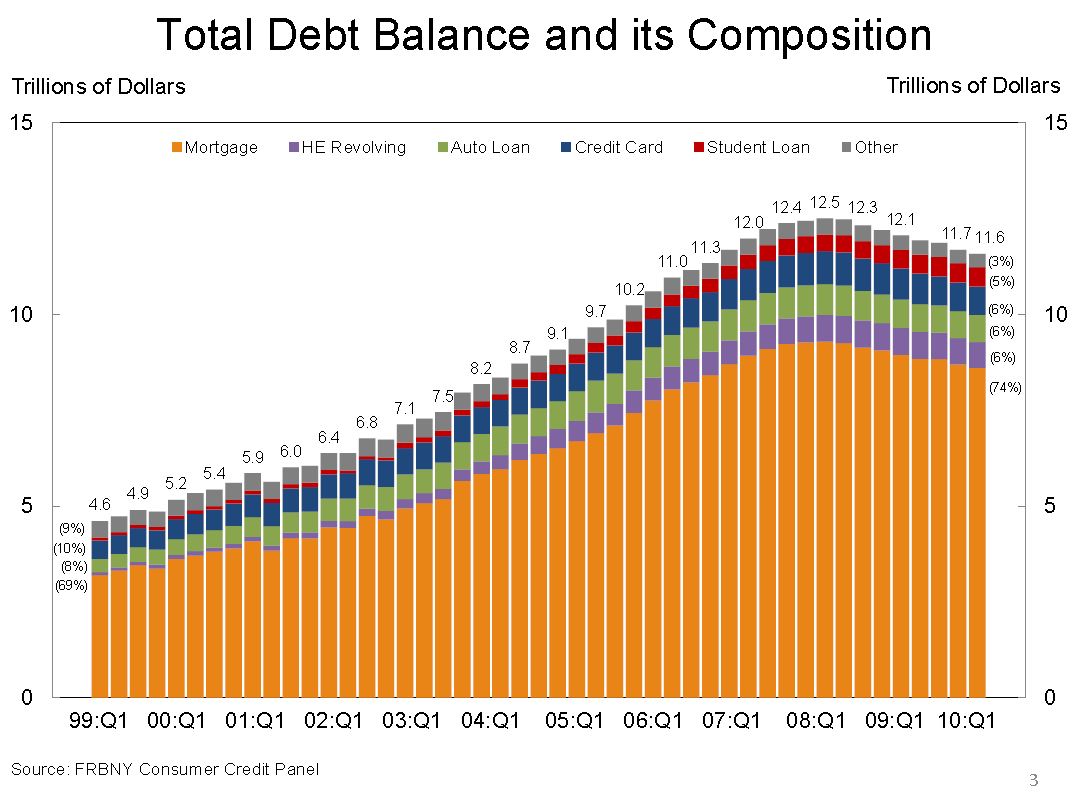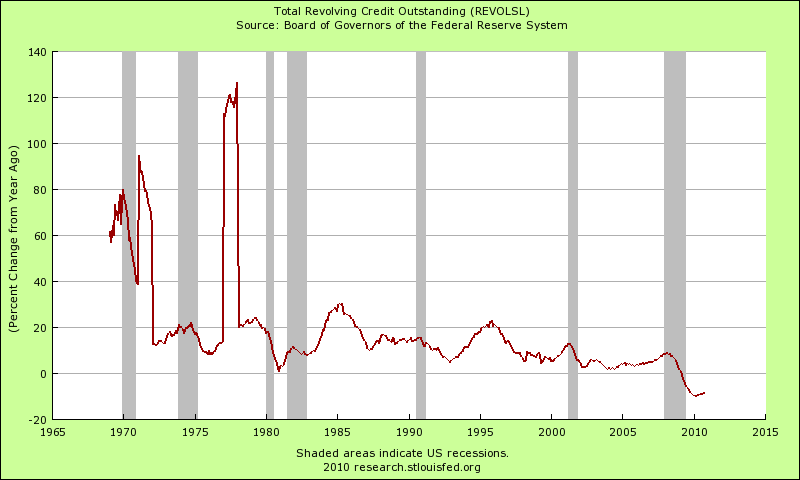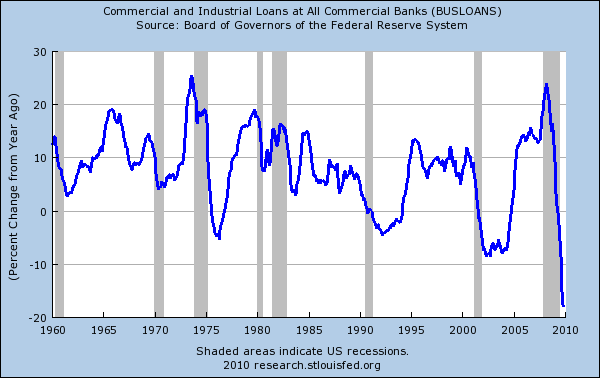When peak credit implodes on the consumer balance sheet – $1 trillion in consumer debt has been removed from the market since 2008. Only consumer debt category growing is student loan debt.
- 2 Comment
The U.S. insatiable consumer machine has reached a peak debt scenario. Household balance sheets are simply unable to take on more debt on their already financially sore shoulders. At the core of the Federal Reserve quantitative easing actions is the mission to lower the interest rate since consumers simply are unable to borrow more. By lowering interest rates, it provides a shadow boost to purchasing power. The way this occurs is through allowing borrowers to pay more for assets yet keep their monthly payments low enough to coincide to their now lower standard of living and stagnant wages. Being in a position like this is troubling to most Americans who hold very dearly the idea that the core mission of their government and financial institutions is to grow a healthy middle class. Many are starting to painfully realize that the government and banks are primarily looking out for their bottom line and this translates to exporting the U.S. middle class standard of living. As you will see with the chart below, consumer debt peaked early in 2008.
The amount peaked at $12.5 trillion and has contracted in virtually every category:

Source:Â Calculated Risk, New York Fed
Now many will probably ask how it is possible for consumer debt to contract if banks in 2007 and 2008 were desperately pleading on bended knee for bailout funds to keep liquidity available to make loans. The problem of course is that banks did a bait and switch and used the money to plug their deteriorating Swiss cheese balance sheets riddled with shoddy loans. If you look at the above chart, home mortgages and home loans make up 80 percent of all consumer debt. Most of the mortgage debt has declined because of the massive number of housing foreclosures. Just think of how many loans were written off by banks or a home that once sold for $400,000 now selling for $200,000. That is a legitimate loss on the balance sheet but also cuts the amount of debt outstanding. It is also the case that banks are simply pushing out mortgages that conform to government standards not dipping into their own funds to make private label mortgages. The banking system has no faith in the people that unwillingly bailed them out.
The one category that has grown is student loan debt. It is now the case (as of summer of 2010) that student loan debt is larger than all outstanding credit card debt. At least with credit card debt, someone can file for bankruptcy and have the debt discharged. Student loan debt sticks with you no matter the circumstances and for-profit schools are using the economic calamity to lure in tens of thousands of students into expensive paper mill operations over promising future job prospects and healthy income.
“Since early 2008, the combined consumer loan market has seen a contraction of nearly $1 trillion in debt (a drop of over 7 percent). The trend will continue because home prices will trend lower and there is still a massive pipeline of foreclosures that will be hitting for the next few years as the economy simply moves sideways.”
Credit cards are the life blood of many consumers for better or for worse but default rates are surging and banks have tightened up lending standards. You might have noticed this with the decrease in credit card offers in your mailbox. Because of this, the revolving credit market has contracted severely:

This is the most severe correction in revolving credit in record keeping history dating back to the early 1970s. This has also parlayed into the new austerity that has swept the nation. We already know through human nature that people will spend if you give them access to unlimited amounts of debt. That was virtually the headline of the last decade. Debt equaled wealth and credit in the minds of many people but what was easily forgotten is that you have to pay the debt eventually. Unlike the Federal Reserve with the ability to print money, a household balance sheet needs to be repaid or defaulted on. Banks wouldn’t mind taking back an expensive home or a nice luxury car assuming the balance is lower than the value of the item. This way, they can turn a profit. The problem is the collateral isn’t anywhere close to the value of what banks have on their balance sheets.
The massive contraction of peak debt isn’t only happening with revolving credit, it is also happening with commercial and industrial loans. Many of these are tied to the massive $3 trillion in outstanding commercial real estate out in the market. The commercial side of the market is a good indicator at the health of mom and pop shops. A small business needs a loan to get off the ground so a commercial builder will need a loan to build a shopping center to provide a store front. Yet the below chart shows nothing of that sort:
So you have to ask where the “recovery†really is showing up. It is hitting on a couple of places. Banks with incredibly low interest rates are speculating in the stock market here but also abroad. That is clear. But it is also the case that domestic businesses with stagnant wages and pushing off benefit costs to employees has increased its profit margins. Yet that model can only exist for so long. We are in the midst of a severe credit contraction brought on by peak debt. The Fed is going deeper into this and the U.S. Treasury will have to confront raising the debt ceiling yet again next year. If it doesn’t this will severely impact the credit rating of the U.S. You think these politicians have the intestinal fortitude to do that? I doubt it.
If you enjoyed this post click here to subscribe to a complete feed and stay up to date with today’s challenging market!2 Comments on this post
Trackbacks
-
CHenry said:
Why is this surprising? On the microeconomic/household level, peak household debt should have occurred around the time of the peak of the housing bubble, when house prices started to fall and those locked into underwater mortgages sharply pulled back on personal spending and those interested in buying real estate held out until the market showed reassuring signs of having hit bottom (which many will argue, 4 years later, it has not.) As mortgage debt represents the largest proportional share of household debt, “credit,” as such will largely follow not income, but home valuations, which have fallen.
November 21st, 2010 at 5:57 pm -
PTM said:
Good stuff. Thanks.
November 21st, 2010 at 8:17 pm

 If you enjoyed this post click here to subscribe to a complete feed and stay up to date with today’s challenging market!
If you enjoyed this post click here to subscribe to a complete feed and stay up to date with today’s challenging market!